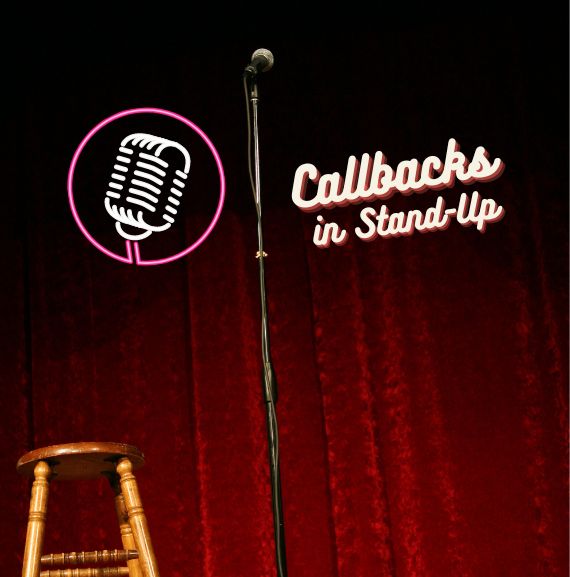
Performing stand-up comedy is hard. Getting up on stage and making an audience of strangers laugh with only the aid of your own wits is tough. If you want to have a successful performance, you need to have as many tricks of the trade in your arsenal as possible. The more tactics you master to make the audience laugh, the better. That’s why the power of callbacks in comedy is so important.
One important element of many of the most popular and successful comedy shows is the callback. A callback, simply enough, is a line in a routine that refers (or “calls back”) to something that happened earlier in the routine.
Callbacks do a lot to keep an audience engaged. Even jokes that are hilarious on their own may have less impact if they are disconnected from one another. By including callbacks in your comedy routine, you shape your performance into a cohesive whole. Audience members who might otherwise become distracted and stop paying attention will remain engaged with your routine.
Stand-up comedy can assume a variety of forms. But performances often follow the form of a story, at least to some extent. Storytelling is a natural way to build rapport with an audience. It is one of the most effective ways to form the connection between the audience and the comic on which stand-up comedy depends.
Good storytelling is, of course, an art. Every story has one or more themes and a narrative structure. Just think about how different parts of a movie related to one another. A scene at the end of the movie may include references — or callbacks — to the scene that opened the movie. It’s the same with a strong comedy routine.
Callbacks work because they ask the audience for something. That is the power of callbacks in Comedy. It might seem that dumbing down the jokes in your routine as much as possible is a smart strategy, but that isn’t the case. Understanding something that requires a little mental effort is naturally more rewarding. Using callbacks creates an “ah-ha” moment where audience members grasp what you were up to when you set up your callback a few minutes previously. They will enjoy understanding the clever way you structured the joke.
Callbacks are sort of like an in-joke between friends. Only someone who was there for the first part of the joke will understand the callback when it appears. This shared understanding will deepen the emotional connection between you and the audience, just like an in-joke does in a group of friends.
In one of his acts, for example, comedian Ron White mentions feeding his dog medicine by concealing it in a piece of cheese. At the end of the performance, then, he jokes about getting his wife to take medication by putting the pill in a bit of cheese. Another example comes from Jim Gaffigan, with the callback spanning multiple performances. In one of his comedy albums, he mentions a Catholic mass as being the longest experience in a person’s life. In an album released years later, he notes that the mass is still going on.
To put on a comedy performance that includes callbacks, you will have to put some real time and effort into crafting your routine. You have to look at the routine as a whole if you want to include callbacks. Just be sure not to shoehorn callbacks into your routine if they don’t actually fit. As powerful as callbacks can be, they can be hacky if done poorly. The best callbacks are the ones that occur to you naturally during the process of writing your routine.
Post by Eddie Case, exclusively for Comedyville.ca, All rights reserved.
Comedyville is a Comedy Club located in Downtown Montreal.


 Previous Post
Previous Post Next Post
Next Post